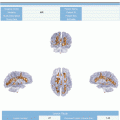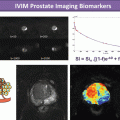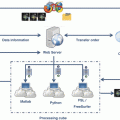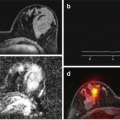© Springer International Publishing Switzerland 2017
Luis Martí-Bonmatí and Angel Alberich-Bayarri (eds.)Imaging Biomarkers10.1007/978-3-319-43504-6_1313. Imaging Biobanks, Big Data, and Population-Based Imaging Biomarkers
(1)
Diagnostic and Interventional Radiology – Department of Translational Research and New Technologies in Medicine and Surgery, University of Pisa, Pisa, Italy
Emanuele Neri (Corresponding author)
Email: emanuele.neri@med.unipi.it
Email: emanueleneri1@gmail.com
Email: e.neri@ao-pisa.toscana.it
Keywords
Imaging biobankBiomarker13.1 Introduction
The modern medicine is constantly looking for the link between genetics, etiology, clinical manifestations, and treatment of diseases. In this regard, the anatomical and physiological interindividual differences and similarities, the predisposition to disease development, and its responsiveness to treatment depend widely from detailed information enclosed in the genoma [1].
The advent of biomedical research promoted the creation of an increasing number of facilities for long-term storage and retrieval of human cell and tissue samples. These biorepositories are known with the term of “biobanks,” which represent organized collections of biological samples (usually of human origin), centrally stored for one or more research purposes [2]. Human biobanks include biological material of healthy subjects and/or patients with specific pathologies (disease oriented), of which the most frequent are cancer related. However, there is some confusion about the meaning of this term: some definitions are general, including all facility types for biological sample collection, while others are specific, comprehending strictly human sample collections [3]. Therefore, a clear definition of the term is an important step toward fostering the collaboration among researchers, allowing easy access to potential sample sources [4].
The history of biobanks starts with the pathology collections on the eighteenth–nineteenth century. During the second half of the twentieth century, the biomedical research was promoted in the United States and then in Europe with numerous collections of human samples for research purposes. In the recent decade, several international initiatives have emerged in order to promote and coordinate all existing and new biobanks and to develop standardized protocols and metrics [5]. The main goal of these initiatives is the implementation of infrastructural projects, aimed to improve the biomedical research by encouraging generic interoperability [6, 7].
The Biobanking and Biomolecular Resources Research Infrastructure (BBMRI) was one of the first European Research Infrastructure projects funded by the European Commission in January 2011.
Actually, BBMRI is the largest organization of biobanks and biospecimen collections worldwide, including a 53-member consortium with over 280 associated organizations from over 30 countries.
BBMRI is implemented under the European Research Infrastructure Consortium (ERIC) legal entity and its headquarters, located in Graz (Austria), and is responsible for the coordination of national activities in all participating countries [8].
Nevertheless, all data deriving from radiological imaging were not included in such biobanks; only recently, several projects have been started up for creating large repositories of image data, called “imaging biobanks” [9]. In this context, the registration of all imaging biobanks is essential, as well as the definition of structured approach for imaging data storage and retrieval. The latest goal is the research of a connection between the imaging and tissue biobanks, providing a deep association between the phenotype and genotype, by means of possible imaging biomarkers [2].
13.2 Radiomics and Personalized Care
The recent advent of high-throughput techniques for molecular analysis, including genomics, transcriptomics, proteomics, metabolomics, and imaging techniques, has allowed the storage of a large collection of data for identifying biomarkers used in the disease stratification, prediction, and early diagnosis of diseases [10, 11].
In this regard, the “radiomics” can be defined as the science that deals with the high-throughput extraction, storage, and analysis of a large amount of quantitative imaging features (imaging biomarker) in order to create accessible databases from radiological images and to reveal quantitative predictive or prognostic associations between images and medical outcomes [12, 13]. The modern and multiparametric imaging, characterized by digital and quantifiable informations, provides a set of biomarkers of the same patient that allow us to quantify the information. These biomarkers may refer to the organ function or neoplastic mass characteristics, and they are expressed by a number.
Examples of biomarkers are the diameter, volume, computed tomography (CT) density measurement, magnetic resonance (MR) signal intensity, standard uptake value (SUV) in positron emission tomography (PET) imaging, contrast enhancement (valuated in MR, CT, or ultrasound examination), perfusion parameters (i.e., blood flow, blood volume, mean transit time, and permeability), tissue elasticity in elastosonography, tissue pattern (texture analysis), morphological pattern, and much more. Moreover, beyond radiology, other types of images can be collected, for example, from endoscopy, microscopy, and surgery, providing measurable personalized data. Each of these biomarkers is patient specific and will be stored, analyzed, and correlated as part of a cluster of biomarkers of that patient [14].
The main focus of imaging biobanks is the “personalized medicine,” where the treatment is increasingly tailored on the basis of specific characteristics of the patient and their disease [15]. Quantitative medical imaging, with the identification of imaging biomarkers, represents a crucial part of personalized medicine providing selection criteria and follow-up strategies, tailored to the patient’s needs [16]. All these imaging informations should be considered as the phenotypic expression of a patient and can be correlated to the genotype. In this setting, the radiogenomics, which is the extension of radiomics, aims to identify a link between genotype and phenotype imaging [17].
13.3 Imaging Biobanks: Current Status
The imaging biobanks are wide data collection including medical images and their correlated imaging biomarkers. The content of these biobanks, linked to that of biorepositories, should be available in a shared workflow among all researchers. A European network of imaging biobanks could significantly enhance the validation of new imaging biomarkers that could be potentially used as prognostic and predictive descriptors in the clinical practice.
In March 2014 the European Society of Radiology (ESR) instituted a dedicated working group (ESR WG on imaging biobanks) aimed at monitoring all existing imaging biobanks in Europe, promoting the federation and communication among them in a white paper [2]. Furthermore, the ESR Working Group promoted the realization of imaging biobanks and techniques for the analysis and processing of imaging biomarkers, stimulating the integration of existing image data repositories and also the link between the imaging biobanks and traditional biobanks, as well as encouraging the researcher cooperation for the standardization, validation and benchmarking of all data stored. The development of imaging biobanks is focused on imaging data collection and sharing for clinical research programs (i.e., clinical trials). By the definition and validation of new biomarkers, the imaging biobanks meet the need for storage, diffusion, and comparison of disease-specific data [14]. In this context, the international research collaboration promotes the comparing of imaging tools, protocols, data, and expertise, in order to establish common acquisition protocols and to ensure high image quality. These data collections could be based on the regional/national screening programs or clinical trials (i.e., performed for colorectal cancer, breast cancer, or lung cancer). The oncologic imaging represents the most suitable field for the discovery and validation of new biomarkers from multiple imaging modalities, since the oncologic patients are frequently monitored for staging and follow-up of treatment response. Nowadays, there is a significant need of detailed and accurate biomarkers, in order to reduce cancer morbidity and mortality, promoting the progression of the traditional “one size fits all” strategy toward a new “personalized” cancer therapy [18].
13.4 Imaging Data Standardization
Accordingly to the dissemination and implementation of imaging biobank, the imaging collection and storage standardization are needed. The development of data standards promotes the communication among all the biobanks, using a standardized format, in order to integrate and share suitable informations for all researchers, as well as to provide legal regulation in the institutions [19]. Nowadays, this cooperation among all researchers about imaging biobanks is very poor. On these bases, the main focus of imaging biobanks is the endorsement of high-quality standard levels, yielding harmonized datasets for biomarker extraction thus reducing the inter-variability [20]. All imaging researchers should cooperate to improve and standardize the image acquisition protocols and archiving, the softwares for data analysis and processing, and further methodologies for imaging biobanks.
Stay updated, free articles. Join our Telegram channel

Full access? Get Clinical Tree







